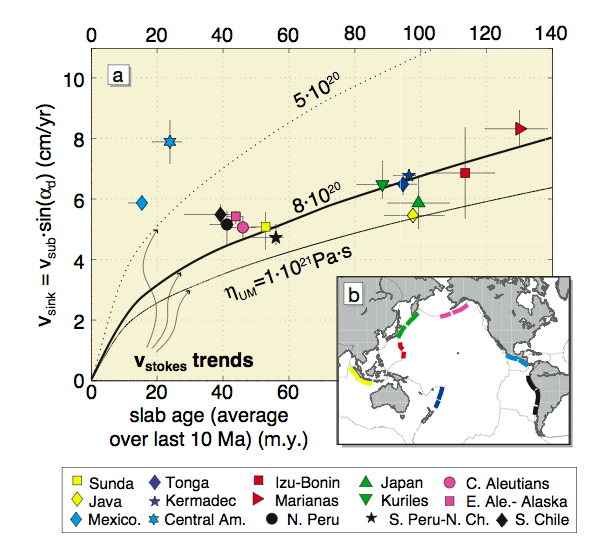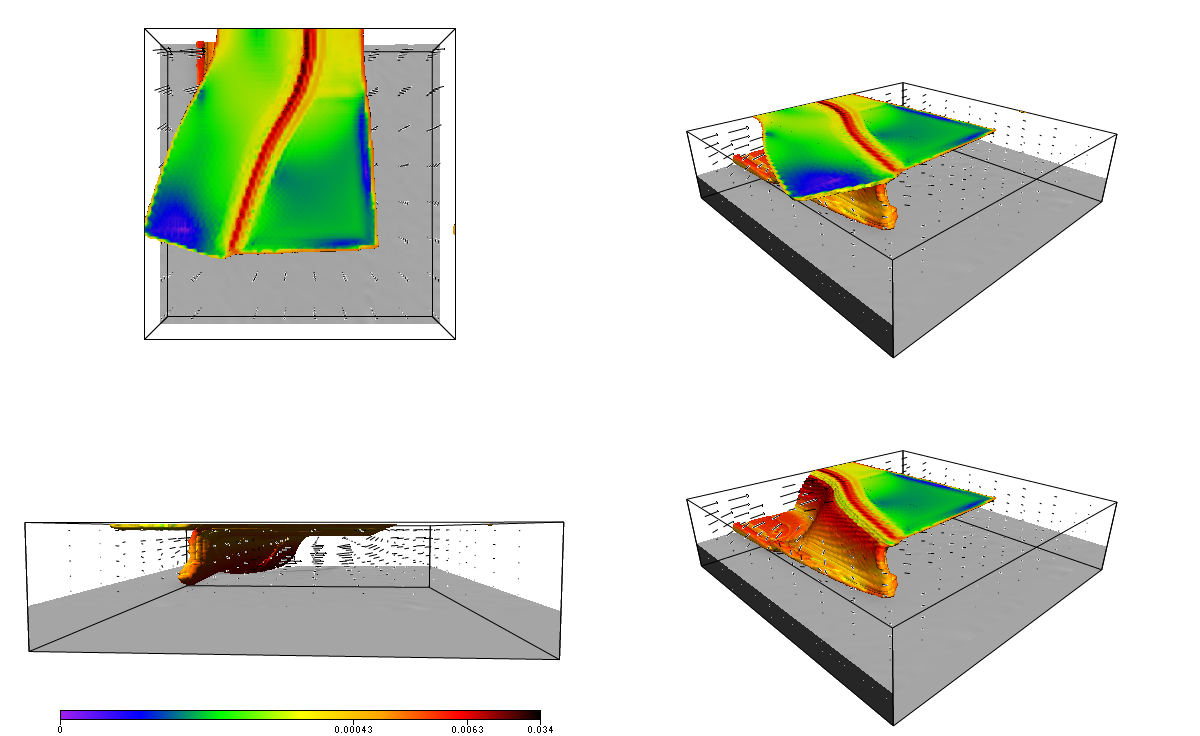|
Research
My research focuses on the dynamics of plate tectonics, that is the driving and resisting forces behind
the large scale motions and deformations of the lithosphere, and aims
to a self-consistent
dynamic description of Earth's outermost shell evolution. This is currently referred to as Plate Dynamics.
|
|
Lithosphere Subduction
It is much debated whether the forces associated with the downgoing plate, the overriding plate, passive or active mantle flow are dominant in controlling the paths of plates into the mantle.
Our investigation on the dynamics and energetics for a free subduction system (Capitanio et al., 2007a, 2007b; Goes et al, 2008)
shows that most of the energy dissipation occurs in driving the passive mantle response, whereas it is very low in the bending (3-20%).
As a result, 1) the slab sinking can be expressed as its Stokes velocity and 2) large stress can propagate to plates at surface.
This offers a physical explanation for the plate motions of major subduction zones and allows illustrating non-steady state
upper-lower mantle flux.
|
|

|
|
Mechanics of the Bending Lithosphere: How strong is the lithosphere?
The bending strength of subducting lithosphere plays a critical role in the Earth’s plate tectonics
and mantle convection. It modulates the amount of slab pull transmitted to the surface and setting the
boundary conditions under which plates move and deform. We have shown that the viscosity layering of the plate under bending stresses reduces dramatically the resistance
plates oppose to bending moments and increase largely the resistance to stretching (Capitanio et al, 2007).
The localization of stress in a thin high-viscosity core
and the strain in the outer layer of the lithosphere allow to the transmission of large fractions of slab pull through
the bend. Using an analytical formulation and parameters from the Earth’s subduction zones from
global compilation
we have shown that plates on Earth weakly resist bending, yet are able to propagate a large amount of slab pull (Capitanio et al., 2009a).
|
|

|
|
The Role of Upper Plate in the Subduction System
The upper plate has critical effect on the motions around convergent margins, the propagation
of force across it and any resultant deformation achieved in the overriding plate.
The integrated strenght of upper plates controls the long-term evolution of subduction zones by determining
how the subduction motions are patitioned into trench migrations vs. plate advance and how the
strain is accommodated in the upper plates (Capitanio et al., 2010). This modeling will further our
understanding of Andean orogeny.
|
|

|
|
The Interaction of Tectonics and Surface Processes
Erosion, transport and sedimentation deeply shape the surface of our planet.
The development of a tectonic topography controls the surface processes of mass transport. Lithospheric
flexure and isostatic uplift respond to the topographic mass re-distribution,
interacting with the tectonic forces applied at the plate margins. We are now working on
a numerical code that couples the large scale geodynamic framework Underworld with SPM, surface
process modeling code (figure) to study topics as cratonic basin formation and stability of
plateaux.
|
|

|